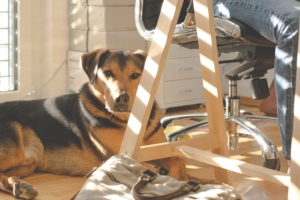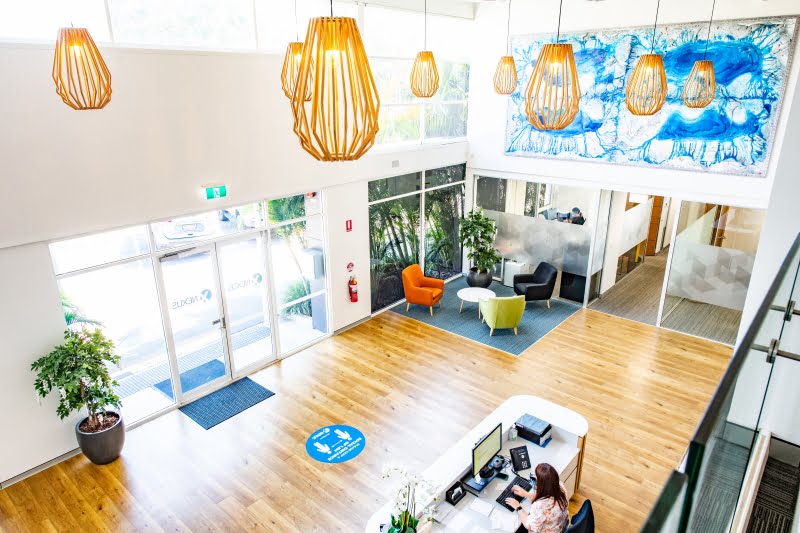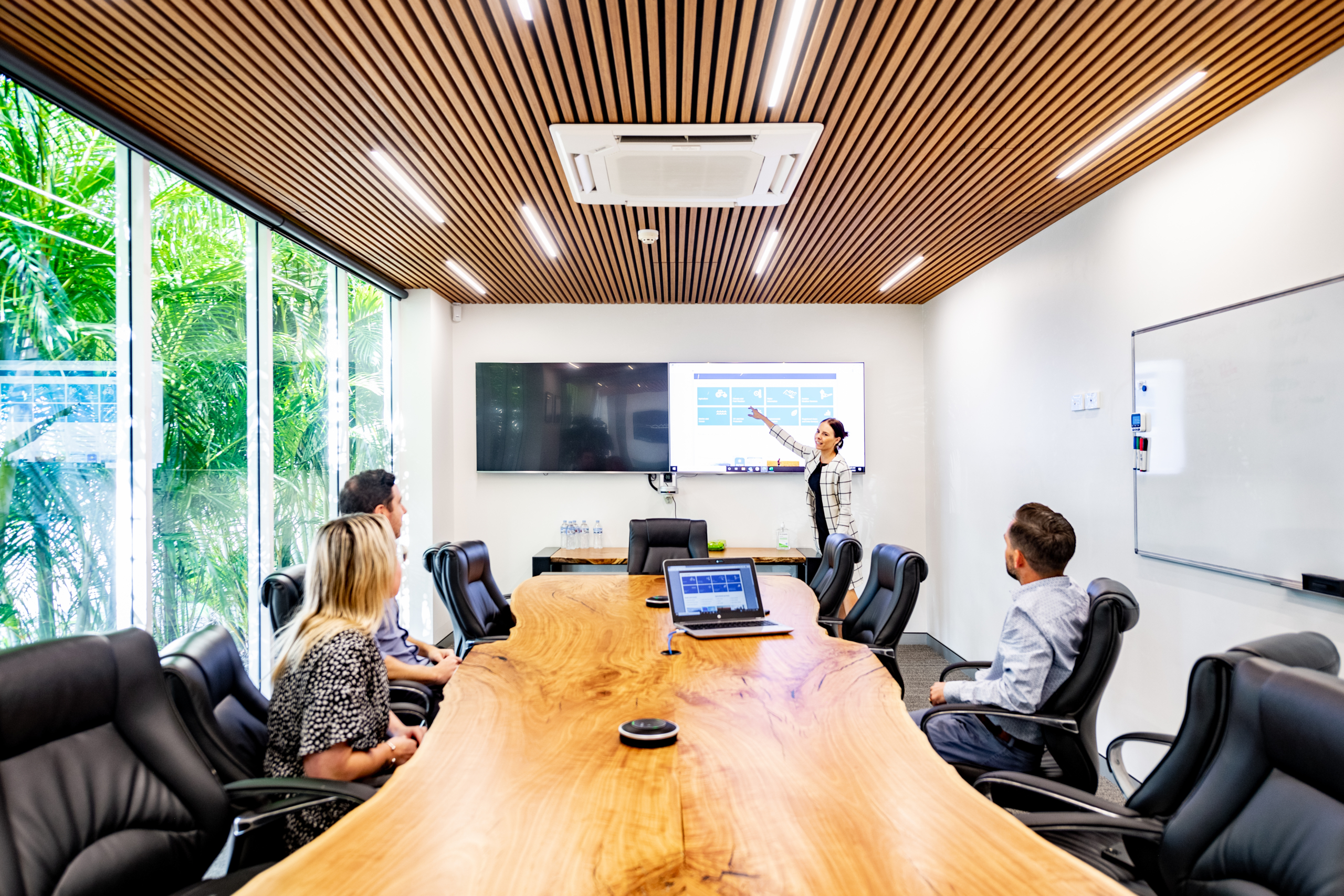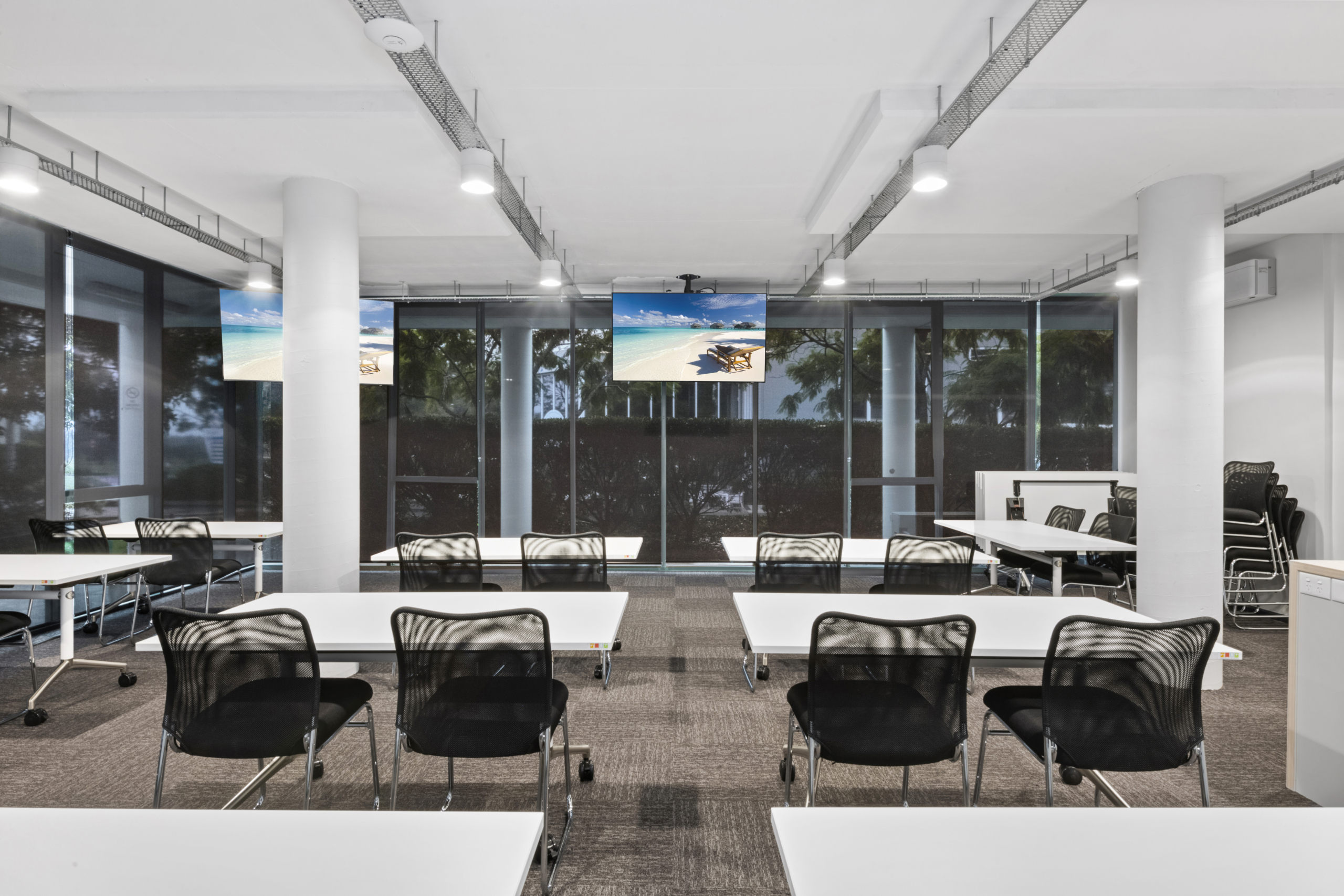In 2016, 33% of Australian workers regularly worked from home (SOURCE), a 50% increase on the 15 years previous. It’s easy to understand why – it’s convenient, comfortable and cost-effective. It ticks so many boxes that many business owners never leave.
However, working from home has inherent problems. This type of workspace doesn’t scale well if you want to employ more people, is rarely an appropriate facility for meeting professional clients, and is not great for networking with other professionals.
If you’re experiencing these problems, you will should consider moving to a commercial workspace. Fair warning though – finding your first professional workspace can be challenging because it either:
- Takes so long to find, lease, and move into the premise (and time is money)
- Costs so much to fit-out, or
- Requires you to commit to a longer-term than you’re comfortable with.
The good news is that we’ve developed some key pointers to help make the process of moving into your first professional-grade workspace easier.
1a. Understand your key drivers.
You probably have a good idea of why you feel like moving into a commercial space is a good idea. But deeply understanding your needs now will help you make decisions on a workspace that is not just suitable at present, but also into the future. Some examples of drivers are:
- You’re planning to employ more people and have insufficient space
- Your lounge room isn’t appropriate for hosting large clients that you want to work with
- You’ve got really bad internet at home
- You’re getting cabin fever at home
- It’s embarrassing listing your home address on your business cards or website
- You just want to separate ‘home’ from ‘work’ and reduce distractions
It may be helpful to SCORE YOUR DRIVERS IN A DECISION MATRIX to make your decision more objective and numbers-driven.
1b. Understand your non-negotiables.
Diving a little deeper, this step will help you quickly rule out some options that may appear attractive at first glance when you’re ready to start looking around for your perfect space.
List your non-negotiables, e.g.:
- Must have parking for 3 employees
- Must have disabled access
- Must have AT LEAST 100mbps NBN download speeds
- Must have plenty of natural light
Understanding your non-negotiables before seeking suitable spaces will save you time during the evaluation stage.
2. Research your options.
Here’s a quick overview of three options that are suitable for first-time commercial office seekers, and their major features and benefits of each.
- Coworking Spaces. With the rise of flexible working arrangements, remote employment and entrepreneurship, coworking spaces have sprung up in almost every metropolitan and regional city in the western world.
- Flexible, affordable month-to-month memberships. You don’t need to commit to a 3-year lease when you’re not sure if you’ll still be in business in 12 months’ time.
- Furniture and outgoings provided. It’s plug-and-play, with 0 downtime.
- Beautiful and high-value facilities like meeting rooms, breakout spaces and high-speed wifi. No more embarrassing client meetings, or frustrating upload speeds.
- A community of like-minded professionals (each space has it’s own ‘flavour’, e.g. creatives, tech, finance etc). No need to carve out time from your schedule for networking, or professional socialising.
- Serviced Offices. Serviced offices are similar to coworking spaces, with a few key differences:
- A focus on private, cubicled workspaces.
- Short-term leases.
- Reception services (phone answering etc.)
- Commercial Leases. This is where is gets tricky!
- Lower cost per-square-metre than coworking spaces and serviced offices, although you will need to outlay a lot more for fit-out, furniture, utilities etc.
- Longer leases are inflexible
- The right property can be much more scalable and customisable for businesses with high-growth plans.
3. List suitable workspaces in your area.
Nowis the time to jump on Google! Search for things like:
- ‘Coworking space ‘
- ‘Workspace ‘
- ‘Serviced office ‘
- ‘Commercial real estate ‘
Other ideas for prospecting suitable workspaces are:
- Contact Commercial Real Estate agents who specialise in leasing (although beware of being led towards something that doesn’t suit you).
- Search for relevant hashtags on Facebook, Instagram or Twitter (#coworking, #smallbiz, #startupAUS etc) and get a feel for who is active in your area.
- Contact your local Business Centre or Council.
- Ask around at networking events or online business networking groups.
4. Assess your listed options against your criteria from steps 1a and 1b.
This will narrow your options down to a shortlist of viable options.
5. Get on-site and see if which option(s) you like.
Now that you only have a few options, you can visit each site and evaluate:
- How easy is it to find? Will it be easy for my clients to visit?
- Are there good eateries/public transport/entertainment options nearby?
- Do I like the aesthetic of the space? Is there enough natural light?
- Would I be comfortable working here?
Most coworking spaces offer a free trial so you can really ‘try before you buy.’
You should have a pretty good idea of which option scores and feels best to you. If it’s impossible to choose – that’s great! Flip a coin.
6. Move.
If it scores well against your criteria, and you’re confident you’ve considered the potential downsides and mitigated those risks, give it a go – especially if there is no long lease period (i.e. a coworking space with month-to-month memberships).
Remember, leasing a commercial property will involve extra downtime (e.g. connecting the internet, reviewing and signing documents, etc) and may involve third parties like solicitors, real estate agents etc, but most serviced offices and coworking spaces are a ‘plug-and-play’ situation where you can immediately move in and get to work. It’s important to bear this in mind when planning workflow or budgeting.
And that’s it!
Now you’ve found a suitable option (at least, for this point in time), reap the benefits of your new space.
NexusHub is the new way to live and work on the Central Coast. We offer state-of-the-art workspaces at an affordable price. To find out more about how our spaces can help you collaborate, innovate, and network, explore our website or contact us for a discussion today.
Author: Harry Balding of Dash Cowork.
Dash Cowork Is A Modern work space and professional network for Businesses and Entrepreneurs to Connect and Grow their initiatives.






